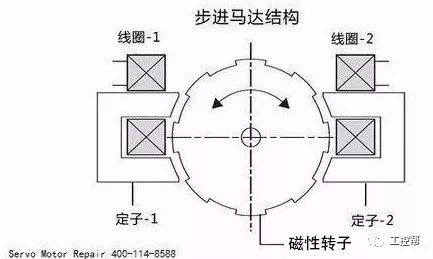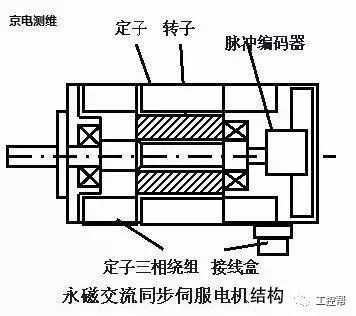To better understand the differences between a stepper motor and a servo motor, it's important to first grasp how each one operates. A stepper motor is an electromechanical device that converts electrical pulses into precise angular movements. Each pulse sent to the driver causes the motor to rotate by a fixed angle, known as the "step angle." This allows for accurate positioning since the number of pulses determines the total displacement. Additionally, by adjusting the frequency of these pulses, you can control the motor’s speed and acceleration, making it ideal for applications requiring precise movement at low to moderate speeds. In contrast, a servo motor uses a closed-loop system for more accurate and responsive control. The rotor inside a servo motor is a permanent magnet, and the stator consists of three-phase windings (U, V, W). These windings create a rotating magnetic field that drives the rotor. An encoder attached to the motor provides real-time feedback to the driver, which compares the actual position with the desired position and adjusts accordingly. This makes servo motors highly accurate, especially when high precision is required. One key difference lies in their control methods. Stepper motors rely on pulse signals to determine the rotation angle, with each pulse corresponding to a single step. Servo motors, on the other hand, use pulse width modulation (PWM) to control the position, where the duration of the pulse determines the angle of rotation. Another distinction is in the equipment and workflow required. A stepper motor system typically includes a power supply, a pulse generator, a driver, and the motor itself. The driver controls the step angle, and the system usually requires two types of pulses: one for direction and one for movement. In comparison, a servo motor setup is simpler, often consisting of a power source, a switch, and the motor itself. The process involves connecting the power and then sending a signal to the motor to control its position. Stepper motors are prone to low-frequency vibration, especially at slower speeds, which can affect performance and cause mechanical stress. This issue is often mitigated through damping or microstepping techniques. Servo motors, however, operate smoothly even at low speeds due to their closed-loop control and built-in resonance suppression features. They also offer advanced diagnostics like FFT analysis to detect and address potential resonance issues in the system. When it comes to torque characteristics, stepper motors experience a drop in torque as speed increases, limiting their maximum operating speed to around 300–600 RPM. Servo motors, on the other hand, maintain constant torque up to their rated speed (often 2000–3000 RPM), and then transition to constant power output beyond that point. In terms of overload capability, stepper motors generally lack this feature, while servo motors can handle significant short-term overloads. For example, some AC servo systems can provide up to three times the rated torque during startup, helping to overcome inertia loads. This means that servo motors can be smaller and more efficient, as they don’t need to be oversized just for starting conditions. Servo motors also have superior speed response. While a stepper motor might take 200–400 ms to reach its operating speed, a servo motor can accelerate from 0 to 3000 RPM in just a few milliseconds. This makes them suitable for high-speed, high-precision applications that require rapid start-stop cycles. In summary, stepper motors are cost-effective and simple for basic positioning tasks, but they have limitations in speed, torque, and accuracy. Servo motors, while more complex and expensive, offer higher precision, better dynamic performance, and greater adaptability in demanding environments. Understanding these differences helps in selecting the right motor for your specific application. Ic Linear,Linear Amplifiers Video Amps Modules,Ic Integrated Circuit Linear,Ics Linear Comparators Shenzhen Kaixuanye Technology Co., Ltd. , https://www.icoilne.com

